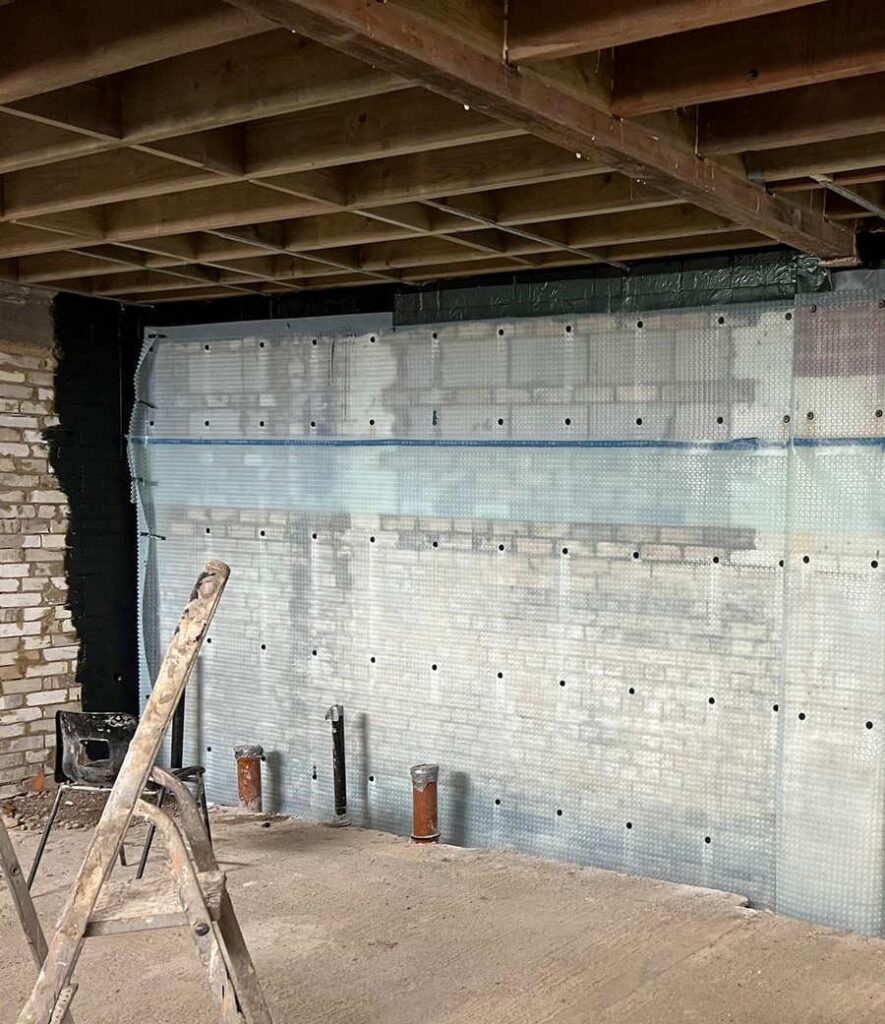
Cavity Drain Membrane Type A Retaining Wall
Crystal Damp Proofing & Basements
Tanking Service in Clapham Junction - Cellar, Vault & Basement
Tanking refers to a process of waterproofing or damp proofing a cellar, vault, or basement area to prevent water ingress and moisture-related issues. It involves creating a waterproof barrier on the walls and floors to ensure that water cannot penetrate into the interior space.
In the context of cellars, vaults, and basements, tanking is typically performed to protect these below-ground areas from water seepage or flooding. These areas are more susceptible to moisture due to their location below the ground level, which can result in dampness, mold growth, structural damage, and other problems if left untreated.
If you have a damp basement and think that tanking might be the waterproofing solution you require, get in touch with us today by using the contact form below or call us on 020 8432 3350 or 07720 752231
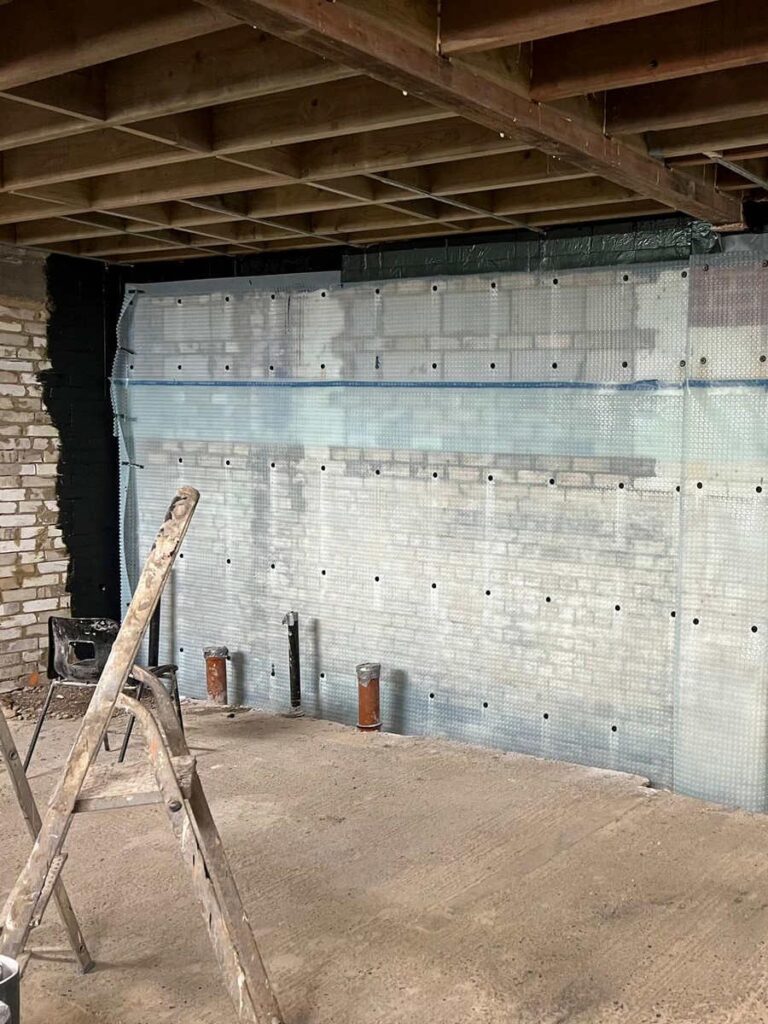
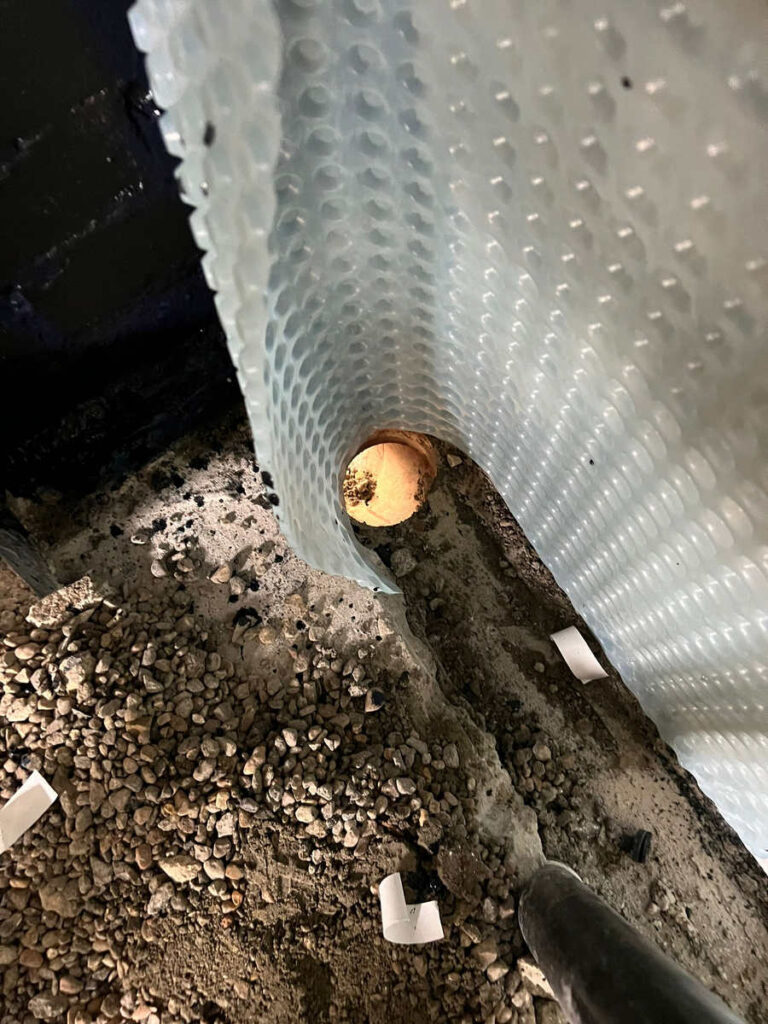
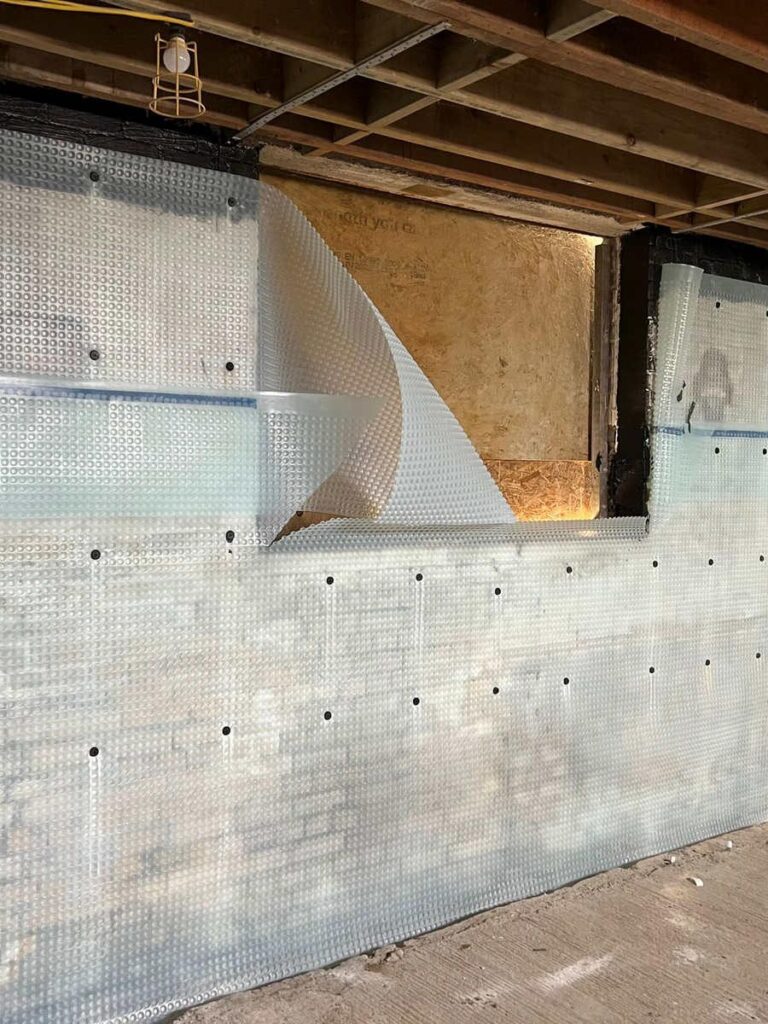
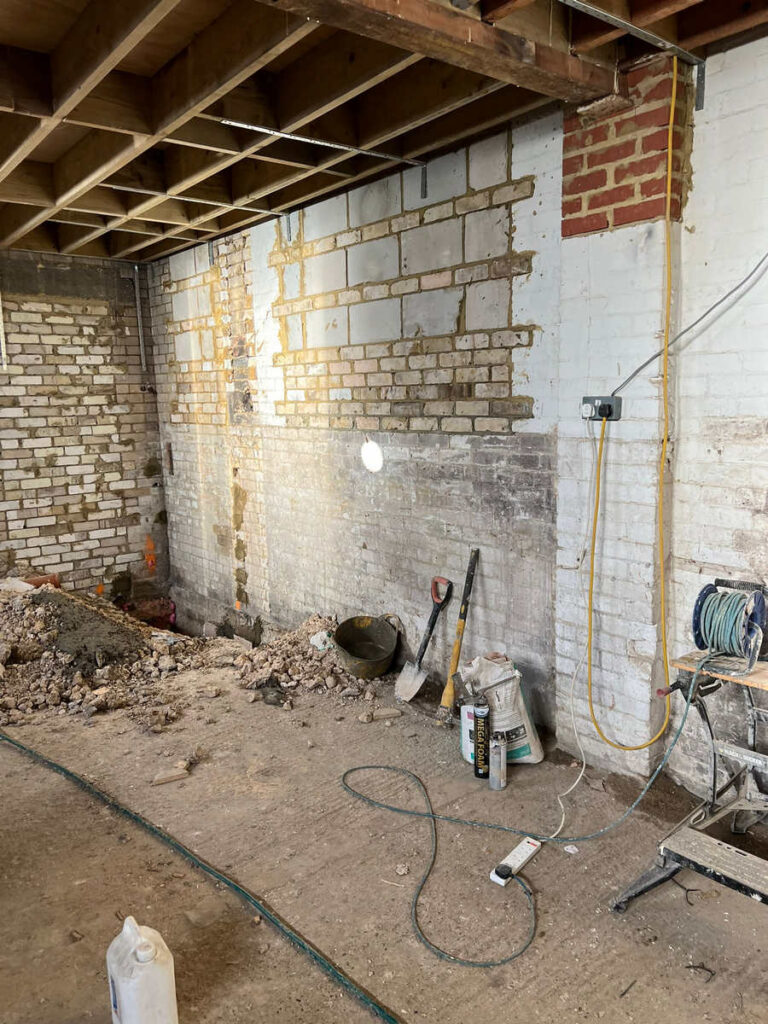
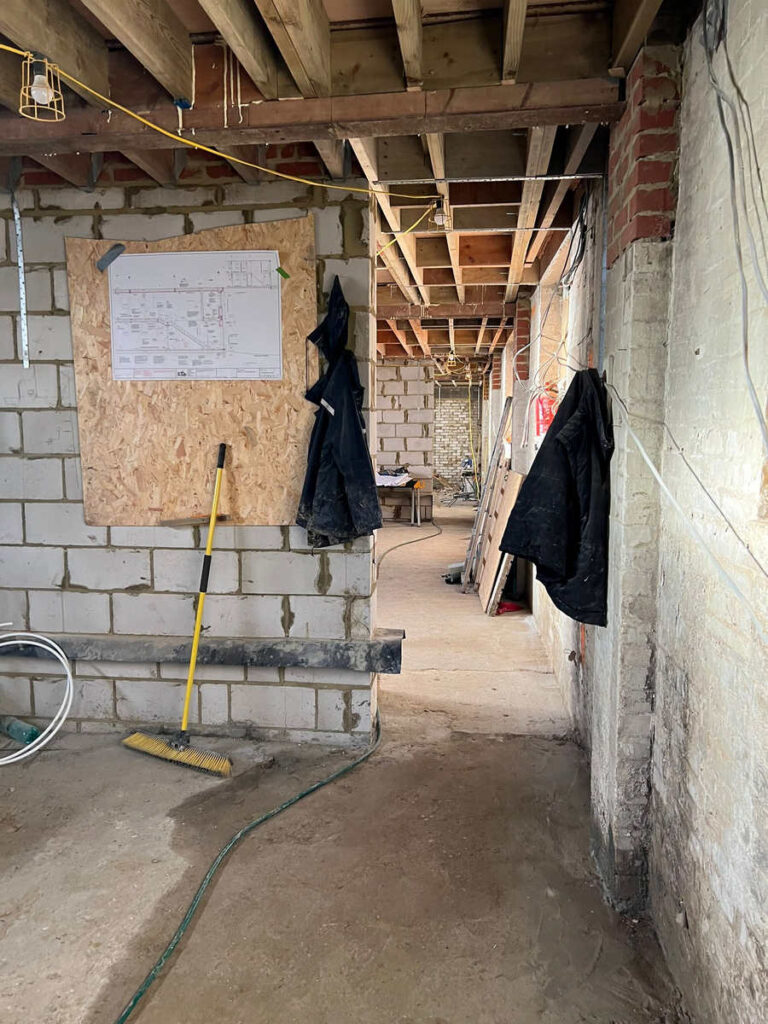


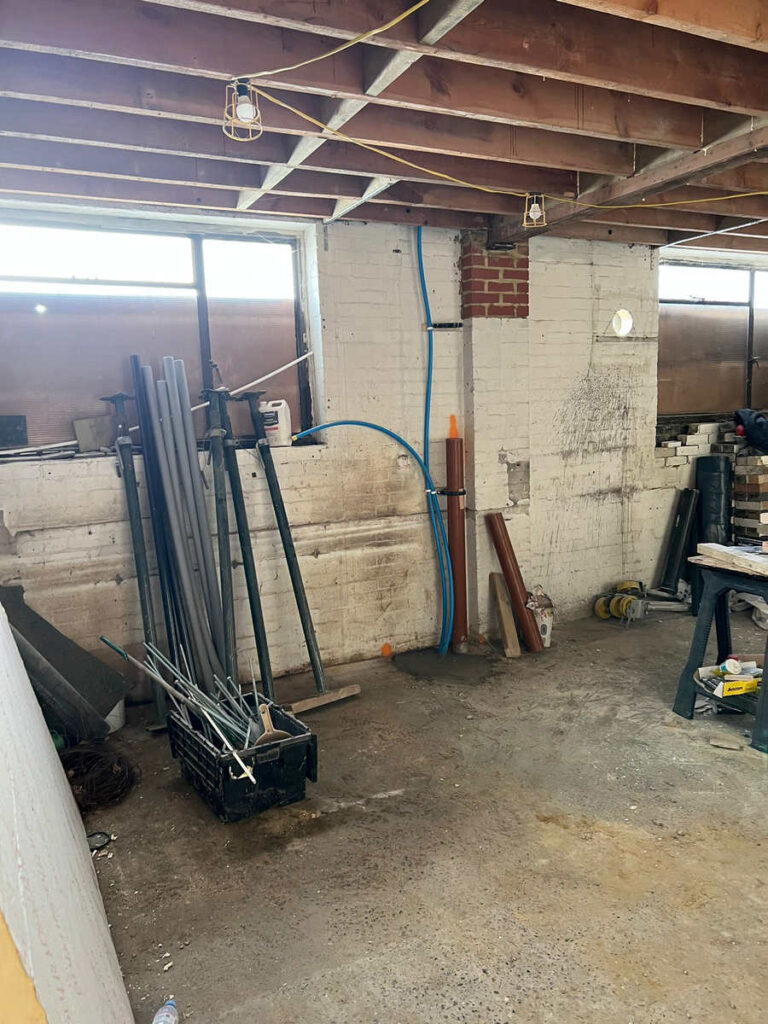
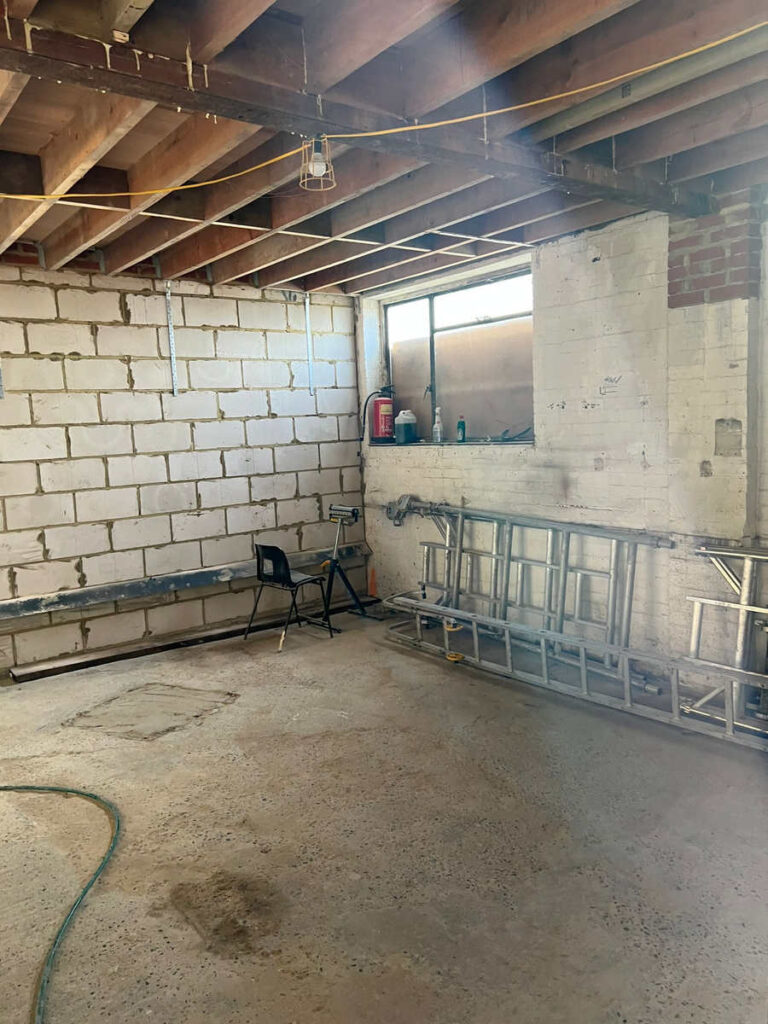
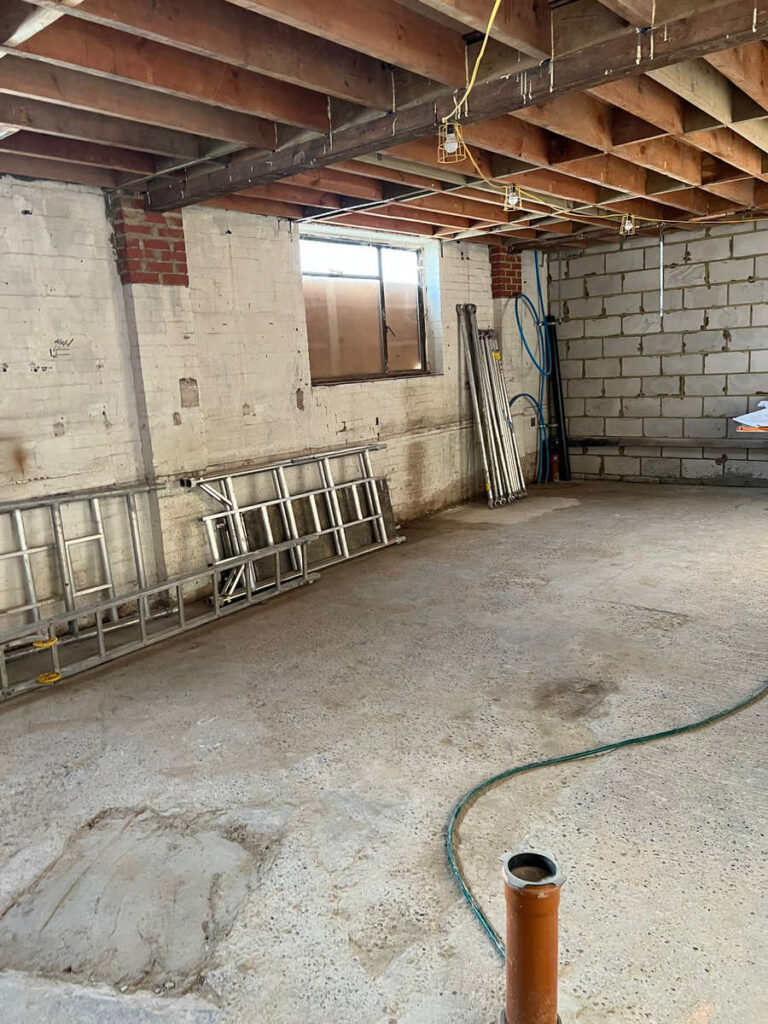
A Cavity Drain Membrane System, also known as Type C Waterproofing, is a popular method for basement tanking that involves the installation of a drainage membrane along with a sump pump system. Here’s how this system works:
Cavity Drain Membrane: A cavity drain membrane is a high-density polyethylene (HDPE) or polypropylene (PP) membrane that is fixed to the walls and/or floor of the basement. The membrane creates a cavity or void between itself and the structure’s surfaces, allowing any water that enters the basement to be channeled and controlled.
Drainage Channels: The cavity drain membrane has built-in studs or dimples that create a continuous air gap between the membrane and the walls/floor. This air gap acts as a drainage channel, allowing water to flow freely downwards.
Floor Drainage: The membrane is typically laid on the basement floor, sloping towards strategically placed floor drains or channel drains. This allows any water that enters the basement to be collected and directed towards the drainage system.
Wall Drainage: In situations where water ingress through the walls is a concern, the cavity drain membrane is installed vertically on the walls. This allows water to enter the cavity created by the membrane and flow downwards towards the floor drains or channel drains.
Sump Pump System: A sump pump system is an integral part of a cavity drain membrane system. It consists of a sump chamber or pit located at the lowest point of the basement. Any water collected by the drainage channels or floor drains is directed to the sump chamber. The sump pump, installed within the chamber, automatically activates to pump out the collected water to a designated drainage point, such as a storm drain or drainage channel.
Benefits of a Cavity Drain Membrane with Sump Pump System:
Controlled water management: The cavity drain membrane system allows water to be managed and controlled within the cavity and directed towards the sump pump system. This prevents water from accumulating in the basement, reducing the risk of flooding and water damage.
Flexibility: The cavity drain membrane system can accommodate movement and shifting of the structure, as the membrane acts as a flexible barrier. It can adapt to changes without compromising its effectiveness.
Minimal disruption during installation: Installing a cavity drain membrane system is generally less invasive compared to other basement tanking methods. It can be applied to existing structures without the need for extensive excavation or structural alterations.
Maintenance and servicing: The sump pump system requires periodic maintenance and servicing to ensure its optimal functioning. This typically involves inspecting the pump, cleaning the sump chamber, and checking the drainage channels. Regular maintenance helps prolong the lifespan of the system and ensures its reliability.
When considering a cavity drain membrane system with a sump pump, it’s essential to consult with a professional waterproofing specialist who can assess the specific requirements of your basement and recommend the most suitable system for your needs.
Crystal Damp Proofing & Basement LTD can give
a discount of 10% to every NEW customer.
The tanking process generally includes the following steps:
Surface preparation: The walls and floors of the cellar, vault, or basement are prepared by cleaning, removing any loose materials, and repairing any existing damage.
Waterproofing membrane: A waterproof membrane or coating is applied to the prepared surfaces. This membrane acts as a barrier, preventing water from passing through and reaching the interior space. Various types of waterproofing membranes, such as cementitious coatings, liquid-applied membranes, or sheet membranes, can be used depending on the specific requirements and conditions.
Drainage system: In some cases, a drainage system may be installed alongside the tanking process to manage any water that does penetrate the exterior walls. This can involve the installation of perimeter drains, sump pumps, or other drainage solutions to redirect water away from the cellar, vault, or basement.
Finishing touches: Once the tanking system is installed, appropriate finishes such as plastering or tiling can be applied to the interior walls and floors to create a usable and aesthetically pleasing space.
Book a Survey
Book a Survey
Cellar and Basement Tanking Solutions in Clapham Junction
When it comes to cellar and basement tanking solutions, there are several options available to effectively waterproof and protect these areas from water ingress. Here are some commonly used tanking solutions:
- Cementitious Tanking: This method involves applying a cement-based waterproofing coating or slurry onto the walls and floor of the cellar or basement. It creates a durable and waterproof barrier that prevents water penetration. Cementitious tanking can be used on both new construction and existing structures.
- Cavity Drainage Membrane System: This system involves the installation of a cavity drainage membrane on the walls and/or floor of the cellar or basement. The membrane creates a sealed cavity behind it, allowing any water that enters to be channeled and drained away through a network of channels or sump pumps. This method is particularly useful when dealing with high water table levels or persistent water issues.
- Liquid Applied Membranes: Liquid waterproofing membranes, such as liquid rubber or polyurethane coatings, are applied directly onto the surfaces of the cellar or basement. These membranes form a seamless, flexible, and durable barrier against water ingress. Liquid applied membranes can be suitable for both horizontal and vertical surfaces.
- External Tanking: External tanking involves applying a waterproofing system to the exterior walls and foundation of the cellar or basement. This method is typically used during new construction or major renovations. It creates a barrier that prevents water from reaching the structure’s walls and foundation in the first place.
- Combination Approaches: In some cases, a combination of tanking methods may be employed to provide enhanced protection. For example, a cementitious tanking system may be combined with a cavity drainage membrane to provide multiple layers of waterproofing.
It’s important to note that the selection of the appropriate tanking solution depends on various factors, including the severity of the water issue, the specific construction details, and the desired use of the cellar or basement space. It is advisable to consult with a professional waterproofing specialist or contractor who can assess the specific requirements and recommend the most suitable tanking solution for your cellar or basement.
Importance of Basement Tanking Treatment in Clapham Junction
Basement tanking, or waterproofing, is of significant importance in
Protection against groundwater:
Clapham Junction Preventing structural damage: Continuous exposure to moisture can lead to structural damage in basements. Water infiltration can weaken the foundation, cause cracks, and compromise the stability of the structure. Basement tanking provides a protective layer that prevents water from compromising the integrity of the building’s foundation and structure.
Creating a usable space: Proper basement tanking allows homeowners in
Clapham Junction Preventing mold and mildew: Damp or wet basements are breeding grounds for mold and mildew, which can have adverse effects on indoor air quality and pose health risks. By implementing basement tanking, moisture levels are controlled, preventing the growth of mold and mildew. This promotes a healthier environment and reduces the risk of respiratory problems or allergies.
Property value: A well-maintained and dry basement adds value to a property. Proper basement tanking in
Clapham Junction Long-term cost savings: Investing in basement tanking upfront can save homeowners money in the long run. By preventing water damage, structural issues, and mold growth, it reduces the need for costly repairs and remediation efforts that may arise from water-related problems.
Given the potential water-related challenges in
What is the difference between Tanking & Waterproofing?
Tanking and waterproofing are related terms used in the construction and building industry to address water-related issues, but they differ in their approaches and applications.
Tanking: Tanking refers to a specific technique used to create a waterproof barrier in areas that are prone to water penetration, such as cellars, basements, or underground structures. It involves applying a waterproofing system, often in the form of a membrane or coating, directly to the surfaces (walls and floors) of the structure. The goal of tanking is to prevent water from entering the interior space by creating a watertight seal. Tanking is commonly used in below-grade areas where water infiltration is a significant concern.
Waterproofing: Waterproofing, on the other hand, is a broader term that encompasses various methods and materials used to make a surface or structure resistant to the ingress of water. Waterproofing can be applied to a wide range of surfaces, including foundations, roofs, walls, balconies, bathrooms, and more. The purpose of waterproofing is to protect the underlying structure from water damage, such as leaks, dampness, mold growth, and deterioration caused by moisture.
Waterproofing methods can include tanking, as described above, but they also include other techniques such as:
External Waterproofing: Applying waterproof membranes or coatings to the exterior surfaces of a structure, such as the outer walls or foundation, to prevent water from reaching the structure in the first place.
Internal Waterproofing: Applying waterproof membranes or coatings to the interior surfaces of a structure, such as walls or floors, to prevent water penetration and protect the interior space.
Cavity Drainage Systems: Installing a system that collects and redirects water that enters a structure, utilizing drainage channels, sump pumps, and membranes to manage water ingress.
Chemical Injection: Injecting specialized chemicals into the structure’s surfaces or joints to create a water-repellent barrier.
In summary, tanking is a specific method of waterproofing that focuses on creating a watertight seal in areas prone to water penetration, such as cellars and basements. Waterproofing, on the other hand, encompasses a broader range of techniques and materials used to protect structures from water damage across various surfaces and applications.
Tanking a cellar is something we at Crystal Damp Proofing & Basements consider to be a skill that we are experts at. With many years of solid experience, we can safely say we are the perfect company for the job. If you require services along the lines of waterproofing a cellar, or basement damp proofing, our Basement tanking Addiscombe
Expert Basement Tanking In Clapham Junction SW11
Crystal Damp Proofing & Basements are proud to have provided Basement and Cellar Tanking for over 20 years. Because of the character of the properties, basement tanking is very common for
LOCAL AREA INFO
Clapham Junction is a major railway station and a vibrant district located in the London Borough of Wandsworth, in southwest London, England. It is one of the busiest railway stations in the United Kingdom, serving as a crucial transport hub with excellent connectivity.
The station itself, named Clapham Junction, is a significant interchange point for trains heading to various destinations, both within London and beyond. It offers connections to multiple train lines, including South Western Railway services, serving areas such as Surrey, Hampshire, and Dorset.
The Clapham Junction area surrounding the station is a bustling and diverse district, known for its lively atmosphere and amenities. It features a mix of residential and commercial spaces, with a wide range of shops, restaurants, cafes, and pubs in the vicinity.
Clapham Junction is also home to the Northcote Road Market, a popular street market that offers a variety of goods, including fresh produce, clothing, antiques, and more. The market attracts locals and visitors alike, providing a vibrant shopping experience.
The district is bordered by Clapham Common, one of London’s largest and most well-known green spaces. The common offers expansive grassy areas, ponds, sports facilities, and walking paths, providing a peaceful retreat from the busy urban surroundings.
With its excellent transport links, Clapham Junction allows for easy access to other parts of London. The nearby Clapham High Street provides additional amenities and entertainment options, including cinemas, theaters, and a range of dining establishments.
Overall, Clapham Junction is a dynamic district and transportation hub in southwest London, offering a diverse range of amenities, vibrant street life, and convenient transport connections.

